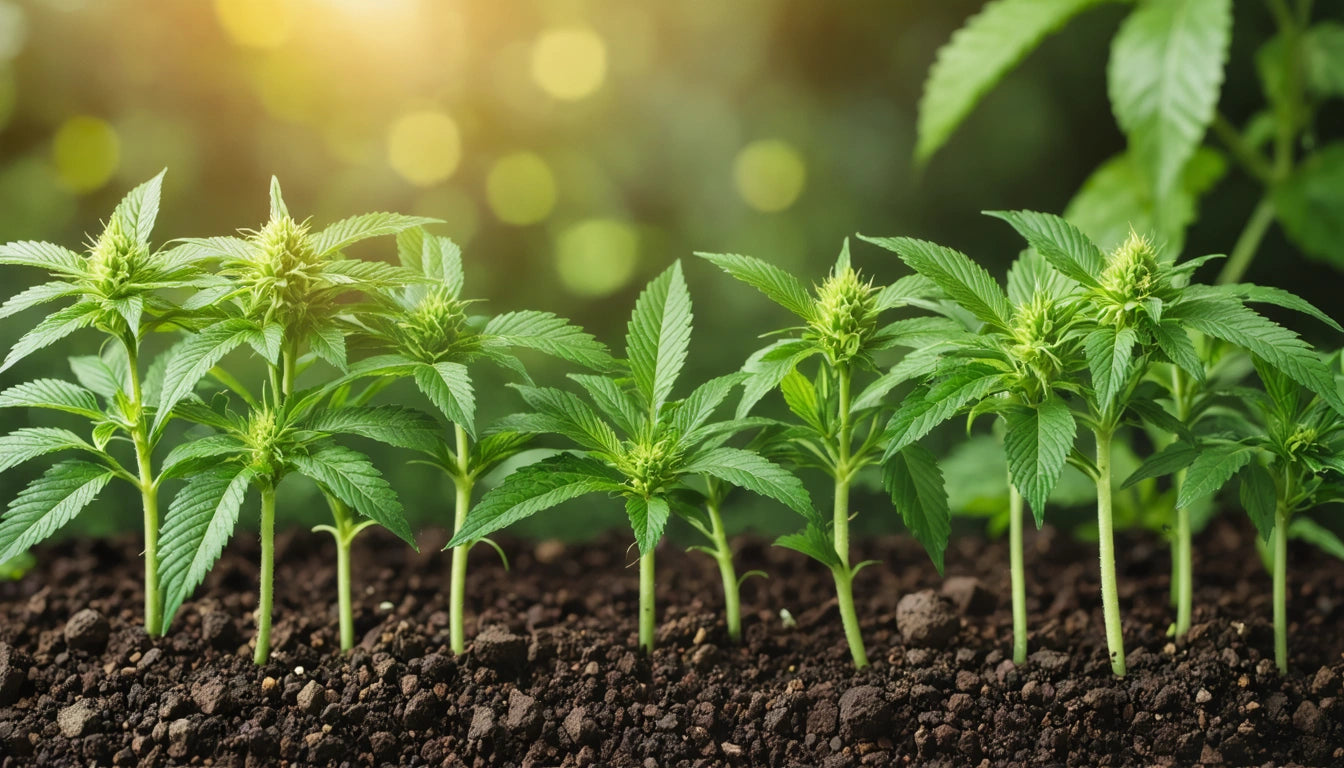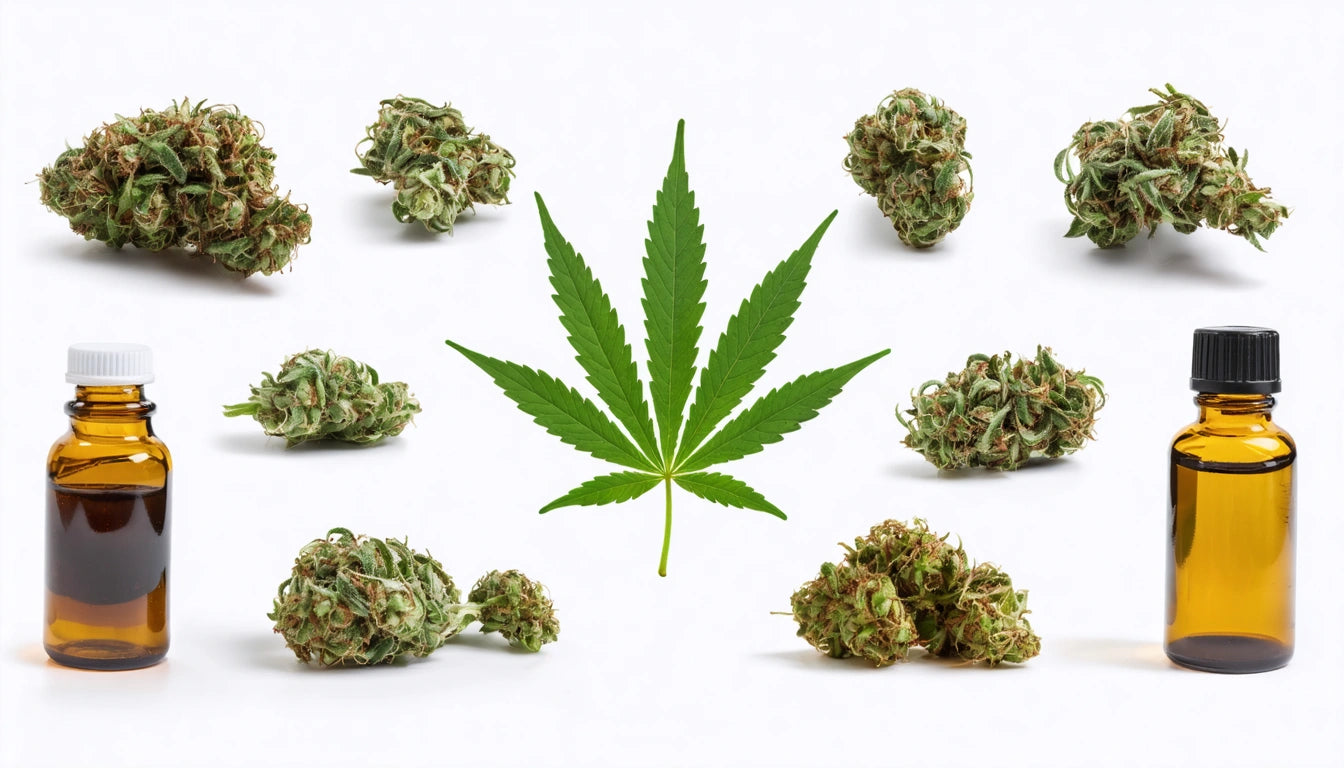Table of Contents
The Ultimate Guide to Choosing the Best Fertilizer for Weed Plants
Selecting the best fertilizer for weed plants can significantly impact your harvest quality and yield. Cannabis has specific nutritional requirements that change throughout its growth cycle, making proper fertilization a crucial aspect of successful cultivation. This comprehensive guide will help you navigate the complex world of cannabis nutrients to optimize your growing results.
Understanding Cannabis Nutritional Needs
Cannabis plants require a precise balance of macro and micronutrients to thrive. The three primary macronutrients are nitrogen (N), phosphorus (P), and potassium (K), commonly referred to as NPK. Each plays a vital role in plant development:
- Nitrogen: Essential for leaf and stem growth during the vegetative stage
- Phosphorus: Critical for root development and flower production
- Potassium: Supports overall plant health, disease resistance, and water regulation
Beyond NPK, cannabis also needs secondary nutrients like calcium, magnesium, and sulfur, plus micronutrients including iron, manganese, boron, and zinc. The best fertilizer for weed will provide a complete spectrum of these essential elements.
NPK Ratios for Different Growth Stages
The best fertilizer for weed plants will have varying NPK ratios depending on the growth stage:
Seedling Stage (First 2-3 weeks)
During this delicate phase, seedlings require minimal fertilization. Many growers use no additional nutrients, relying instead on pre-fertilized soil. If needed, a very diluted solution with an NPK ratio around 2-1-2 can be used.
Vegetative Stage
As plants focus on leaf and stem development, they need higher nitrogen levels. The best fertilizer for growing weed during this stage typically has an NPK ratio of 3-1-1 or similar nitrogen-heavy formulations.
Flowering Stage
When plants begin flowering, their nutritional needs shift dramatically. The best flowering fertilizer for weed will have higher phosphorus and potassium levels with an NPK ratio around 1-3-2 or even 0-3-3 for late flowering.
Organic vs. Synthetic Fertilizers
When determining the best fertilizer for weed plants, you'll need to choose between organic and synthetic options:
Organic Fertilizers
The best organic fertilizer for weed includes options like:
- Compost tea
- Worm castings
- Bat guano
- Fish emulsion
- Bone meal
- Kelp meal
Organic nutrients release slowly, creating a living soil ecosystem that promotes natural growth. They're ideal for growers focused on flavor profiles and sustainable practices, as detailed in this guide to organic nutrients.
Synthetic Fertilizers
Synthetic options deliver nutrients in readily available forms, allowing for precise control over plant feeding. They typically produce faster growth and can help maximize yields. Many commercial growers use synthetic nutrients because they can be fine-tuned to exact specifications.
For large-scale operations, proper storage of nutrients and other supplies becomes crucial. Many commercial growers use high-quality storage solutions to maintain the potency and effectiveness of their fertilizers and amendments.
Best Fertilizers for Vegetative Growth
During the vegetative stage, the best fertilizer for weed plants will be nitrogen-rich to support robust leaf and stem development. Top options include:
- Fox Farm Grow Big: A liquid concentrate with an NPK of 6-4-4
- Advanced Nutrients Grow: Specifically formulated for cannabis with an NPK of 3-1-3
- General Hydroponics Flora Series (Grow): Versatile for both soil and hydroponic systems
- Dr. Earth Home Grown: An organic option with beneficial soil microbes
The best outdoor fertilizer for weed often includes slow-release granular formulations that can withstand environmental factors while providing steady nutrition.
Optimal Flowering Nutrients
As plants transition to flowering, the best fertilizer for flowering weed will emphasize phosphorus and potassium. Top choices include:
- Fox Farm Tiger Bloom: With an NPK of 2-8-4, it's designed to promote abundant blooming
- Advanced Nutrients Big Bud: A bloom booster that enhances flower density
- General Hydroponics Flora Series (Bloom): Balanced for the flowering phase
- Roots Organics Buddha Bloom: An organic option with an NPK of 0.5-2-1
The best bloom fertilizer for weed should also include secondary nutrients like calcium and magnesium, which become increasingly important during flower development, as explained in this flowering nutrient guide.
Application Methods and Schedules
How you apply fertilizer is just as important as what type you choose:
Soil Application
For soil grows, the best fertilizer for weed plants can be applied through:
- Top dressing: Adding dry amendments to the soil surface
- Liquid feeding: Mixing water-soluble nutrients for regular waterings
- Compost tea: Brewing organic matter into a nutrient-rich solution
Hydroponic Application
In hydroponic systems, the best liquid fertilizer for weed is delivered directly to the roots in solution. This requires careful monitoring of EC (electrical conductivity) and pH levels.
Feeding Schedule
Most cannabis fertilizers come with recommended feeding schedules, but as a general rule:
- Seedlings: No fertilizer for 2-3 weeks
- Early vegetative: 1/4 to 1/2 strength nutrients every other watering
- Late vegetative: Full strength nutrients every other watering
- Early flowering: Transition to bloom nutrients at full strength
- Late flowering: Reduce strength in final weeks (flushing)
Troubleshooting Nutrient Issues
Even with the best fertilizer for weed plants, problems can arise:
Nutrient Deficiencies
Common signs include yellowing leaves (nitrogen), purple stems (phosphorus), or brown leaf edges (potassium). Address these by adjusting your nutrient mix accordingly.
Nutrient Burn
Characterized by yellow/brown leaf tips, nutrient burn indicates overfertilization. If this occurs, flush the growing medium with plain pH-balanced water and reduce nutrient concentration.
pH Imbalance
Cannabis prefers a pH range of 6.0-6.5 in soil and 5.5-6.0 in hydroponic systems. Outside these ranges, nutrient lockout can occur regardless of fertilizer quality.
Future Innovations in Cannabis Fertilization
The cannabis cultivation industry continues to evolve, with new fertilization approaches emerging. These include customized nutrient profiles based on specific strain genetics, beneficial microbe inoculations that enhance nutrient uptake, and precision application technologies that reduce waste while maximizing absorption.
As research expands, we're seeing more targeted formulations designed for specific cannabis varieties and growing conditions. The best fertilizer for weed plants in the coming years will likely incorporate these advancements, offering growers unprecedented control over their plants' development and resulting product quality.
Whether you choose organic or synthetic, liquid or dry, the best fertilizer for your weed plants will ultimately depend on your growing method, environment, and goals. By understanding the fundamental nutritional needs of cannabis and how they change throughout the growth cycle, you can create an effective fertilization strategy that produces healthy plants and abundant harvests.











Leave a comment
All comments are moderated before being published.
This site is protected by hCaptcha and the hCaptcha Privacy Policy and Terms of Service apply.